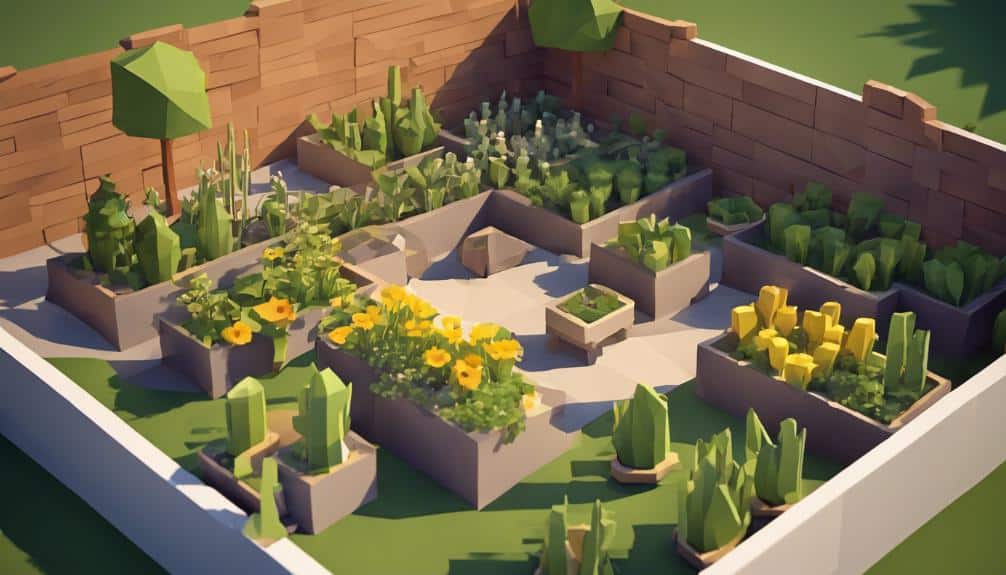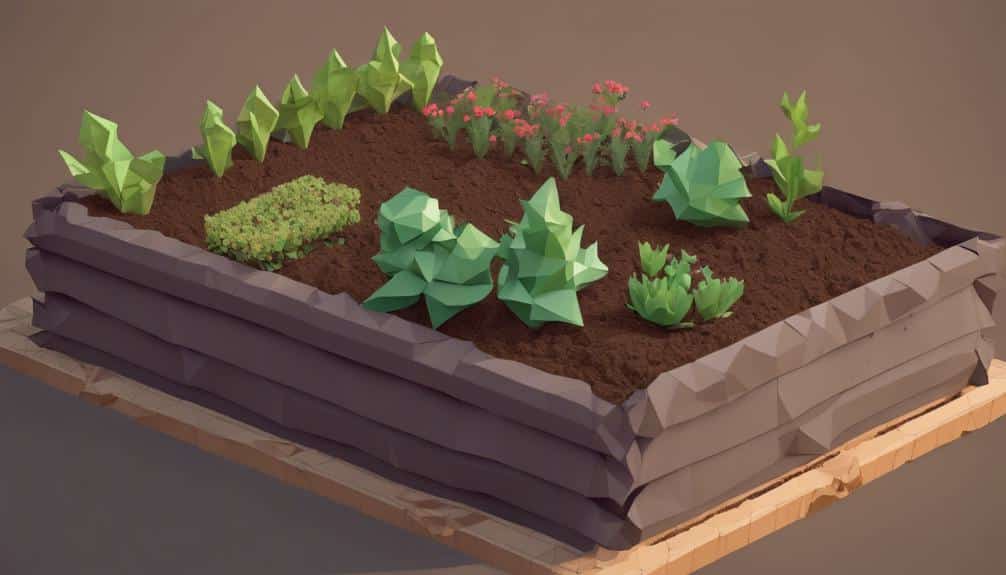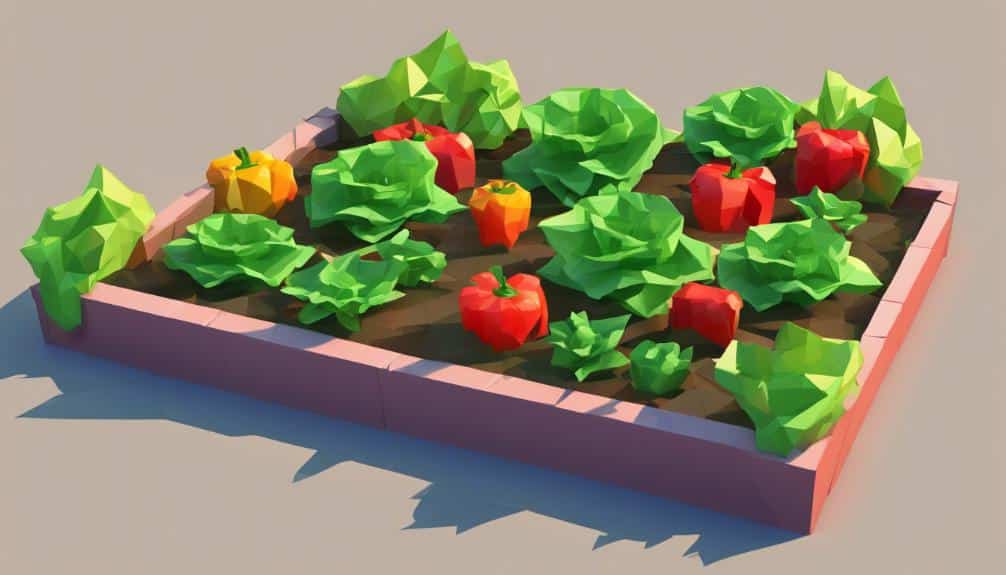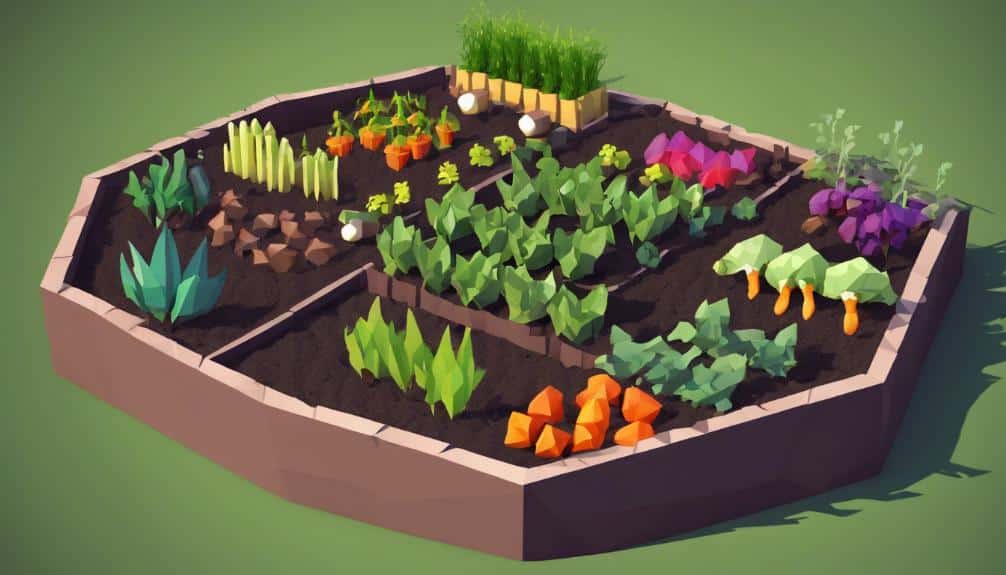Transform your outdoor space with a raised bed garden. Follow this beginner’s guide for step-by-step instructions on creating your green oasis.
Choose the perfect location, plant your seeds, and watch your garden flourish. Discover the secrets to a bountiful harvest and a visually stunning garden.
Start your journey to greener pastures now.
Using these companion planting techniques in your raised bed gardens can positively affects in many areas.
Why you should have one?
When to start?
Start your raised bed garden based on the season and its impact. You can build raised garden beds any time of the year.
Fall is great for building before spring planting, while winter may have weather challenges.
Building in spring allows for early planting, and summer construction is ideal for fall harvest plants like kale and spinach.
Use materials like scrap wood, tin roofing, cedar, or repurposed stock tanks. Check garden stores, hardware stores, local woodworkers, online retailers, or seed companies for ready-made or custom-built raised garden beds.
Enhance soil quality, drainage, and root growth with raised beds. Choose a sunny, accessible location with good drainage for your raised bed. Build your raised bed using cost-effective, eco-friendly materials. Select suitable plants, maintain the garden, and focus on plant health.
The Right Location

Position your raised bed garden strategically for optimal plant growth and easy maintenance. Consider these key factors:
- Sunlight: Ensure your raised bed gets 6-8 hours of sunlight daily.
- Water Source: Have easy access to water for convenient irrigation.
- Proximity to Home: Place the raised bed near your home for quick monitoring.
- Drainage: Avoid poorly drained areas to prevent waterlogging.
- Aesthetic Integration: Integrate raised beds into your landscape for an attractive garden appearance.
Build your own raised bed garden
When building your own raised bed garden, consider using materials like scrap wood, tin roofing, rough cut lumber, repurposed stock tanks, or steel to suit your preferences. Customizing the size, design, and materials of your raised bed allows you to create a gardening space tailored to your needs.
These options offer cost-effective solutions for constructing a durable and functional raised bed garden.
Scrap Wood
Using scrap wood for your raised bed garden is a budget-friendly and sustainable choice. Here are some tips to keep in mind:
- Use leftover wood from previous projects to save money and reduce waste.
- Avoid treated lumber when building raised beds for edible plants.
- Get creative and customize your raised bed layout with unique designs.
- Repurpose old wood to create eco-friendly raised bed gardens with character.
- Building with scrap wood benefits your wallet and the environment, making it a smart choice for your gardening projects.
Tin Roofing
Repurpose tin roofing for a unique raised bed garden. Secure it to wood corner posts for a durable and rustic look. Get used tin roofing from salvage yards or local suppliers.
It adds creativity and sustainability to your garden. Tin roofing is a sturdy and visually appealing option for your raised bed.
Rough Cut Lumber
Rough cut lumber is a fantastic choice for constructing your own raised bed garden because of several reasons:
- Cost-Effective: Save money and still get a beautiful garden.
- Unique Aesthetic: Enjoy a natural, rustic look that stands out.
- Durability: Rough cut lumber is sturdy and can handle different weather conditions.
- Sustainability: Repurpose lumber for an eco-friendly option.
- Local Availability: Easily find rough cut lumber from nearby sawmills, supporting local businesses.
Raised bed gardens enhance gardening by improving soil quality, drainage, and root growth for thriving plants. They allow for efficient and effective growth of a variety of plants with earlier planting, extended growing seasons, and higher productivity. These gardens control weeds, support intensive planting in small spaces, and result in bigger harvests.
Repurposed Stock Tanks
Repurposed stock tanks are ideal for creating a durable and customizable raised bed garden.
Made of galvanized metal, these tanks offer a cost-effective solution for building raised beds. They come in various sizes, allowing flexibility in garden design.
The galvanized metal ensures longevity by preventing rust. With proper drainage and soil preparation, you can easily transform stock tanks into productive raised bed gardens.
Start growing a variety of vegetables, herbs, and flowers in your personalized raised bed garden using these durable and accessible tanks. Get creative with repurposed stock tanks for a practical and long-lasting gardening solution.
Steel Raised Beds
Steel raised beds are a sturdy and low-maintenance option for your garden. They’re durable, resistant to rot and pests, and heat up quickly in the sun for better plant growth.
These beds are versatile and can be customized to fit different garden layouts. While they may have a higher upfront cost, steel raised beds are a cost-effective choice in the long run due to their durability.
Stone Raised Beds
Stone raised beds are a durable and long-lasting option for your garden. They can be stacked to create walls of varying heights, catering to different plant needs while adding a natural and rustic look.
Stones retain heat, creating a warmer environment for plants to thrive. The weight of the stones ensures both durability and visual appeal.
Embrace the beauty and functionality of stone raised beds for a sustainable and attractive growing space.
Preparing the ground

Prepare the ground for your raised garden bed by choosing a flat, level surface. Clear the area of rocks, debris, and vegetation.
Ensure proper drainage to avoid waterlogging. Level the ground for stability. Consider using landscaping fabric to prevent weed growth.
What to put on every layer?
Layering your raised garden bed is crucial for optimal plant growth. Begin with cardboard or newspaper to suppress weeds and aid drainage.
Then, add twigs or small branches for improved aeration.
Follow with nutrient-rich compost to enhance soil quality.
Mix topsoil and compost for a balanced growing medium.
Lastly, top it off with a layer of mulch for moisture retention and weed prevention.
Raised Beds Soil Mix

To optimize plant growth in raised beds, it is important to create a suitable soil mix.
Combine 50-60% topsoil with 40-50% compost to provide essential nutrients for the plants.
Customize the mix based on the specific needs of the plants you are growing.
Save money by purchasing materials in bulk, and adjust the soil depth according to the requirements of different plants.
Before filling the raised beds, check the quality of the soil to ensure it is suitable for plant growth.
Consider using pre-mixed options for added convenience and a balanced nutritional content.
Filling a raised garden bed
When filling your raised garden bed, consider using cardboard or newspaper as a base layer to suppress weeds.
Guarantee proper aeration and drainage by adding compost to your soil mix.
Fill the bed with a combination of compost and soil, layering them for top-notch plant growth.
Cardboard or Newspaper
Cardboard or newspaper is a great choice for filling a raised garden bed. They naturally suppress weeds, enrich the soil as they break down, and are eco-friendly and cost-effective.
You can easily find these materials at home or from local newspapers.
Aeration and Drainage in a raised garden bed
Prioritize aeration and drainage for healthy plant growth in raised garden beds.
Mix compost with soil to improve aeration and drainage, ensuring oxygen reaches plant roots.
This prevents waterlogging and root rot, promoting vibrant and thriving plant life in your raised bed garden.
Compost
Compost is essential for enriching the soil in raised garden beds. It adds nutrients, improves soil structure, enhances microbial activity, retains moisture, and boosts fertility for healthy plant growth.
Compost plays a crucial role in creating a balanced and sustainable environment for plants to thrive in. It is a natural, organic way to feed the soil and provide all the necessary elements for robust plant development.
Soil
Calculate the cubic feet of your raised bed and use a soil calculator to determine the amount of soil needed.
Fill gradually to avoid settling. Level the soil with a rake after filling for a smooth surface.
This creates an ideal environment for your plants to thrive in your raised garden bed.
Plants for a new garden bed

When planning your new garden bed, consider the types of plants that will thrive in your environment.
Take time to research the specific needs of each plant to ensure proper growth and development.
Experiment with a variety of plants to create a diverse and vibrant garden bed.
Seeding
Plant selection is key for a thriving raised garden bed. Here are plant options for your raised bed:
- Herb Garden: Basil, cilantro, or mint for culinary use.
- Leafy Greens: Lettuce, spinach, or kale for continuous harvests.
- Root Crops: Carrots, radishes, or beets thrive in raised beds.
- Fruits: Strawberries or compact tomatoes for a bountiful harvest.
- Companion Plants: Marigolds or nasturtiums attract beneficial insects and deter pests.
Transplanting
Transplanting plants to a new garden bed requires selecting healthy plants with established roots.
Prepare the raised bed with nutrient-rich soil for good drainage and aeration.
Ensure plants are well-watered before moving to help them adjust.
Place plants in the bed according to spacing recommendations for proper growth.
Transplant on cooler, overcast days to reduce stress.
Tending Raised Bed Garden
Now, let’s talk about tending to your raised bed garden.
You need to focus on:
- Watering
- Weeding
- Fertilizing
- Supporting plants
- Protecting them
These key points are essential for maintaining a healthy and thriving garden space.
Watering
Proper watering is crucial for your raised bed garden’s health. Follow these watering tips for thriving plants:
- Check soil moisture weekly.
- Use a soaker hose or drip irrigation.
- Water in the morning for better root absorption.
- Mulch soil to retain moisture.
- Adjust watering based on weather and plant needs.
Weeding
Weeding is crucial for a healthy raised bed garden. Remove weeds promptly to give your plants the space and nutrients they need to thrive.
Regular weeding prevents competition for nutrients and keeps your garden organized. A weeded garden ensures your crops have the best environment to grow and produce a plentiful harvest.
Fertilizing
Proper fertilization is essential for a thriving raised bed garden. Here are some key points to consider when fertilizing your raised bed garden:
- Use compost for rich nutrients and improved soil structure.
- Incorporate worm castings to enrich the soil and boost plant vitality.
- Choose organic fertilizers like compost and worm castings to feed plants naturally.
- Avoid chemical fertilizers to maintain soil health and protect beneficial organisms.
- Establish a regular fertilizing schedule based on your plants’ needs for consistent nourishment.
Supporting Plants
Using sturdy trellises is crucial for supporting plants in raised bed gardens. Trellises help plants stay upright, prevent stem breakage, and improve air circulation. They minimize disease spread and maximize crop yield.
Gardenary offers various trellises like panel, obelisk, or arch styles to enhance your raised bed designs. Understanding the importance of trellises in raised bed gardening can significantly boost plant growth and productivity.
Protecting
Protect your raised bed garden by following essential tips:
- Use mulch for moisture retention, weed suppression, and soil temperature regulation.
- Employ row covers to shield plants from pests, harsh weather, and critters.
- Utilize companion planting to repel pests and attract beneficial insects.
- Install netting to protect crops from birds.
- Conduct regular inspections to address any issues promptly.
Mistakes to avoid as a beginner
Avoid pressure-treated lumber in raised bed gardening to prevent chemicals from harming plants. Ensure proper drainage, avoid overcrowding, use quality soil mixtures, and consider sunlight needs for successful gardening.
Here are key mistakes to avoid:
- Pressure-treated lumber: Chemicals can harm plants.
- Poor drainage: Leads to root rot and diseases.
- Overcrowding plants: Hinders growth, airflow, and light exposure.
- Low-quality soil mixtures: Lack essential nutrients for plant growth.
- Ignoring sunlight needs: Inadequate light reduces growth and yield.
